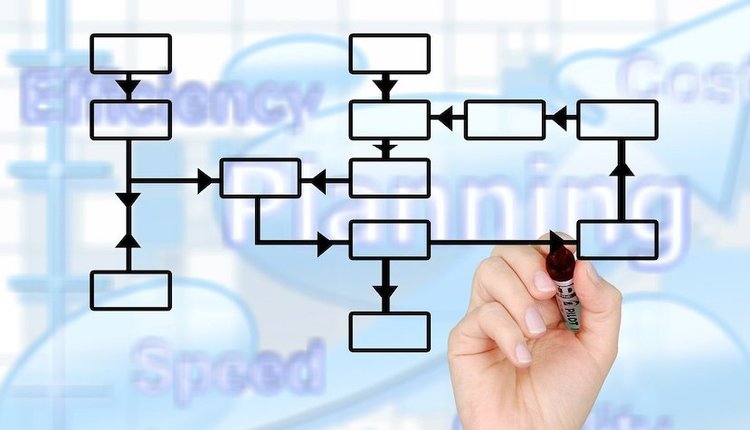
Image by: ferlistockphoto, ©2016 Getty Images
After a long debate and a lot of reading, the company decides an electronic document management (EDM) solution is imperative. Budgets have been released, and the chief executive officer (CEO) is personally making sure the project will not be kept in some lost drawer of a desk. At the end of this very successful board meeting, the pale face of the organization and methods (O&M) director asks himself/herself, “Now what?”
This is a common question, since there is little guidance on what to do next or where to go for additional information. The main issue here is not to feel obliged to choose a particular brand of software. Start by sitting down quietly and describing the EDM solution of your dreams.
Let’s start by keeping it simple: Each department of the corporation will have its own digital archive or file cabinet. This makes sense because each will have its own field set of metadata for classification, searches, and processes related to that department. For example, a vendor invoice can be stored in accounting's archive and by the department that ordered the product or service. In accounting, the invoice will be classified by cost center, vendor code, etc., while in the department’s file cabinet, it will be classified as type of product, brand, model, limit of warranty date, etc.
Once you have defined what file cabinets you need, it will be necessary to identify which metadata fields will be required to classify the documents archived in each of those file cabinets. The rule of thumb is quite simple: You list the useful fields in order to perform searches. If the "type of document" is a search criterion, then it will need to be a metadata field. Other typical search fields are date of document, number of document, entity (to which the document is related), subject, status (e.g., new, confirmed, approved, rejected, etc.), and so on. Eventually, uncommon fields may be used as well, such as version number, project number, etc. Each organization is different, so there's no exact recipe.
At this stage, you have made huge progress. You have now listed the file cabinets you need and the metadata fields for each that make sense to your organization. Now, it's time to think about each of those fields in terms of their content. Is the content at the free will of the user archiving the document? Careful. There are fields that can quickly lead to chaos if their content is not closely controlled, such as the type of document. Imagine an invoice: Some people will name it “invoice,” “vendor invoice,” “vendor inv.,” and so on. At the time of a search or in a workflow, this will not work. It is imperative that critical fields have controlled content. Now may be the time to mention mandatory fields at the time of archiving. If some fields are mandatory, such as the "type of document," other ones, such as "number of document," may raise some doubt; not all documents archived have a number, but nevertheless, this is something worth some thought.
The next step is to decide who has access to what and what to do after the access. This is not trivial and requires a lot of thought. Usually, the sales department, for instance, has full control over its own file cabinet, but obviously, they will not have full control over accounting's file cabinet. Nevertheless, sales may have read-only access on documents related to sales in accounting's file cabinet. The same may apply to other departments or other roles. Roles: This is a new concept here. A role identifies a specific set of rights and functions. A role is not exactly the same as a department. At least, every department will have two roles: staff and the manager. Naturally, the manager of the department will have a different set of rights than those of the staff. It is then necessary to identify the different roles in the organization, what these roles can access, and what they can do after this access.
The next item that is a must when planning an EDM solution is workflows. Workflows define what must happen to documents—who takes them, under what conditions, and what decisions must be made for a particular document. The path of the document must be clear, whatever the decisions made by the relevant person. This is not as “simple” as it seems. For instance, let's look at an invoice approval flow: It is easy to identify the flow when everyone approves, but what if someone in the flow rejects, or even more obscure, if someone partially approves or partially rejects? These issues must be thought about independent of any software. These are the business rules to be satisfied. The flow of a document should not be literal but a virtual one. Documents should always be kept at the file cabinet so that all those authorized may access them and take whatever information is relevant. What should “circulate” is people’s attention to process the document.
Basically, that’s it and, roughly, in this order:
1. Which file cabinets
2. Which metadata fields
3. Which characteristics of metadata fields
4. Which roles
5. What roles can access and what to do after access
6. Which flows
As you go along, you will find something to change in a previous step, but at the end, you have drawn yourself the basis of what the software vendor must implement. There are other issues to think about such as how to automatically archive emails, how to use other solutions' databases to populate metadata fields, or even how to use mobile equipment to process documents without the need to go to the office or without a PC connection. Connecting to enterprise resource planning (ERP), or any other solution, is also something to think about, but if you stick with these six steps before you talk with potential suppliers, you will be ok.
Joao Penha-Lopes specializes in document management since 1998. He holds two postgraduate degrees in document management from the University Lusofona (Lisbon) and a PhD from Universidad de Alcala de Henares (Madrid) in 2013, with a thesis studying the economic benefits of electronic document management (EDM). He is an ARMA collaborator for publications and professionally acts as an advisor on critical information flows mostly for private corporations. Follow him on Twitter @JoaoPL1000.
















